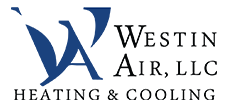
OH LIC #38290

OH LIC #38290
Home > Furnace Guide
A common heating system used, especially in colder climates, is a gas furnace. A gas furnace can be fueled with either natural gas or propane. Gas furnaces are usually the preferred method of heating, when gas is available, because of the quick response, the very warm air that they produce, and the ability to provide heat even in the coldest temperatures. The furnace itself is usually between 34'' and 40" tall, and comes in various widths, usually, 14", 17.5", 21" and 24", although this can vary between different manufacturers. Gas furnaces come in various efficiencies, such as 80%, and high efficiency models that vary between 92% and up to more than 98% efficient.
A furnace is made up of several key components, which are housed in an outer shell made of metal. Some of the key components of a gas furnace are: An ignition system, usually an electronic ignitor, instead of the old, less efficient, pilot lights that were used for many years. Gas valves that control the flow of gas into the burners. Burners, which are made of metal and burn the natural gas or propane. A heat exchanger, which can be made of stainless steel, or aluminized steel. 80% efficient furnaces only have one heat exchanger, while high-efficiency models have two, the primary and a secondary heat exchanger. The addition of the secondary heat exchanger makes the furnace burn the gas more efficiently. A metal flue or PVC vent pipes, depending on whether the furnace is an 80% model or a high-efficiency model. A draft inducer motor, which pulls in the combustion air that is necessary for the natural gas or propane to burn. A blower motor, which is necessary to move the air through the furnace and into the duct work. A thermostat. While this is not actually a part of the furnace, it is a necessary part of the system to tell the furnace when to turn on and off.
When the thermostat detects that the temperature in the home has dropped below the desired temperature, it sends a signal to the furnace. When the furnace receives this signal, the gas valve will open which allows the natural gas or propane to flow into the burners. Combustion used to be provided by a pilot light that would burn a small amount of gas constantly. In today's modern furnaces, combustion is accomplished by an electronic ignitor. When combustion is accomplished in the burners, the gas flame that is burning will heat up the metal in the heat exchanger. The heat exchanger gets very hot and is designed to keep the indoor air that will be heated and circulated throughout your home, separate from the combustion exhaust air that will contain dangerous gases, such as carbon monoxide. When the heat exchanger heats up, the blower motor which operates a very powerful fan, will turn on and circulate the air in your home. The large fan which is operated by the blower motor will pull air from the return air ducts in your home into the furnace and over the heat exchanger, and push the heated air into the supply ducts that will deliver the warm air to all areas of your home. When enough warm air has been delivered to your living spaces to warm them up to the desired temperature which was set on the thermostat, the thermostat will signal the furnace to turn off. This is accomplished by the gas valve being closed, cutting off the fuel for the combustion. The blower motor usually runs for a little while after the gas valve is closed, so that the remaining heat in the furnace can be delivered to your home living spaces. When the temperature in your home drops below the set point on the thermostat, the whole process repeats itself. This complete process maintains a nice warm home for you, even in the coldest temperatures. As natural gas remains one of the most cost effective ways to heat your home, it is still favored by most customers in climates that get very cold.
Air Conditioning Services
Heating Services
Geothermal Services